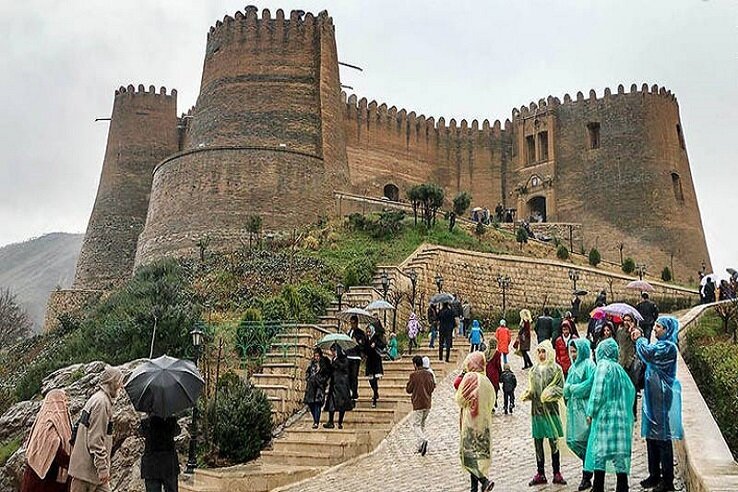Eid-al-Fitr boost: 11k visits to Sassanid fort recorded in three days

TEHRAN – As one of the most sought-after historical places of interest across Iran, the Falak-ol-Aflak fortress drew in more than 11 thousand visitors in the course of the three-day Eid-al-Fitr holidays.
As per records, Lorestan’s Sassanid-era fortress was also among the top ten destinations across the country in terms of the highest amount of ticket sales throughout the time of the Nowruz holidays.
On January 31, in a momentous step, Ali Darabi, the deputy minister of cultural heritage announced that Iran has submitted a dossier on “Falak-ol-Aflak Fortress” to the United Nations Educational, Scientific and Cultural Organization for a possible registration as a World Heritage.
The unmissable eight-towered fortress dominates Khorramabad as one of the most visited travel destinations in the region for both domestic and foreign sightseers. The fortress seems particularly imposing and dramatic when floodlit at night, offering picturesque views of its encircling crenelated battlements.
Some experts believe that Falak-ol-Aflak is comparable with similar works in Naqsh-e Rostam, Naqsh-e Rajab, Tape Chugan, and Firuzabad in Fars province. In 2018, the UN cultural body added an ensemble of Sassanian historical cities in southern Iran -- titled “Sassanid Archaeological Landscape of Fars Region” -- to its World Heritage list. The ensemble comprises eight archaeological sites situated in three geographical parts of Firuzabad, Bishapur, and Sarvestan. It reflects the optimized utilization of natural topography and bears witness to the influence of Achaemenid and Parthian cultural traditions and Roman art, which later had a significant impact on the architecture and artistic styles of the Islamic era.
The Sassanid era is of very high importance in the history of Iran. Under the Sassanids, Persian art and architecture experienced a general renaissance. Architecture often took grandiose proportions, such as the palaces at Ctesiphon, Firuzabad, and Sarvestan, which are amongst the highlights of the ensemble. Crafts such as metalwork and gem engraving grew highly sophisticated, yet scholarship was encouraged by the state. In those years, works from both the East and West were translated into Pahlavi, the language of the Sassanians.
